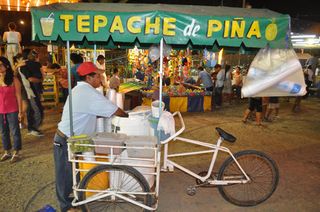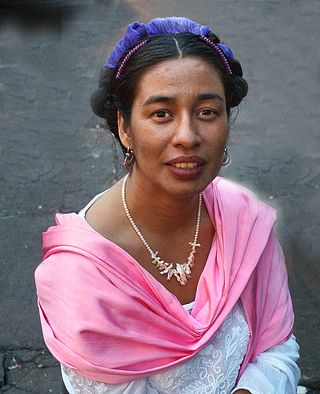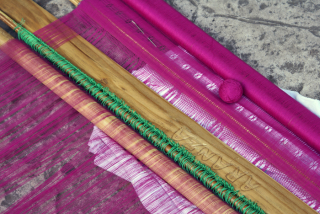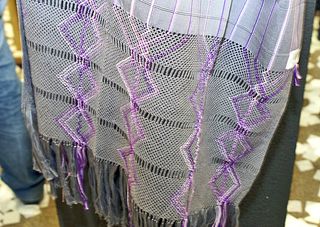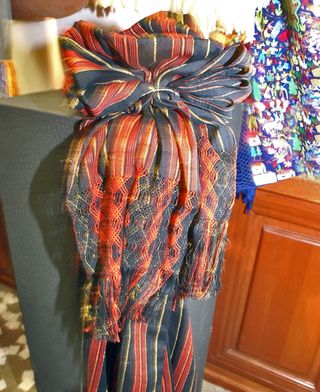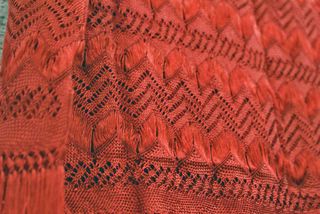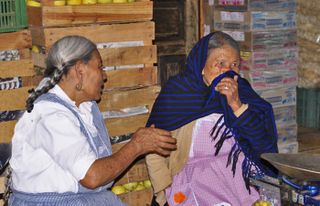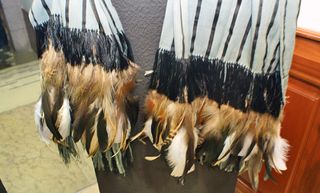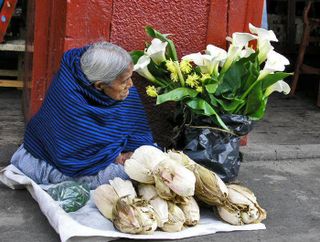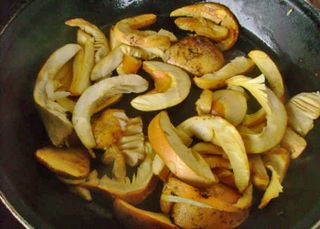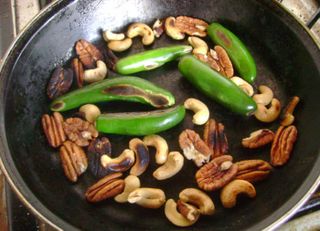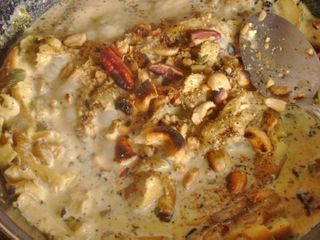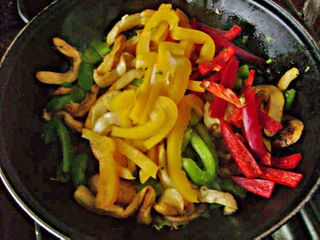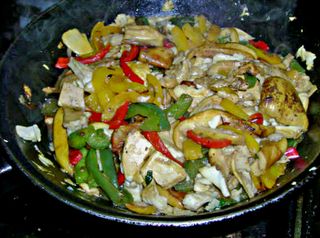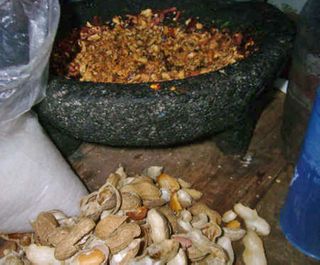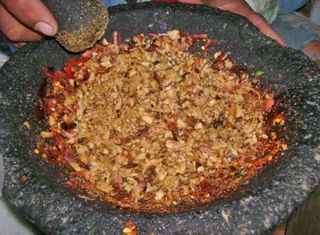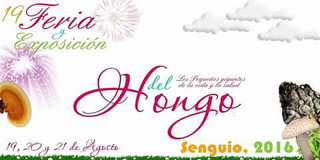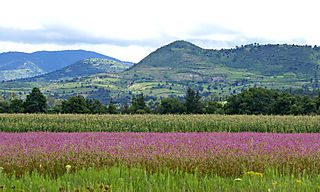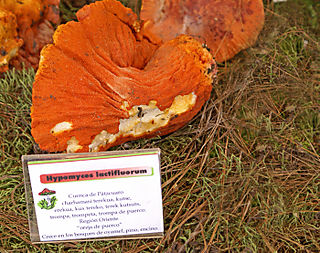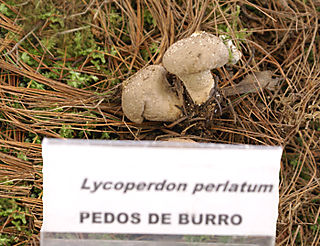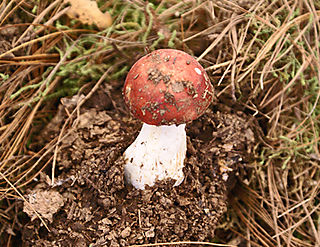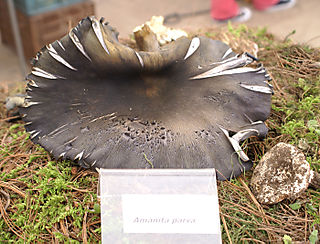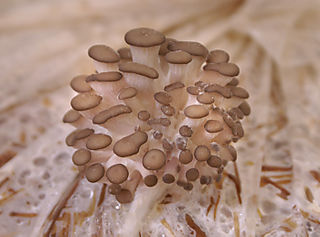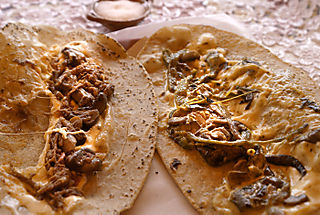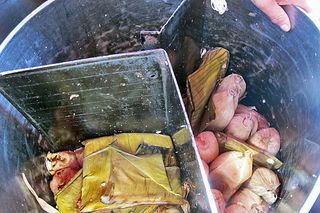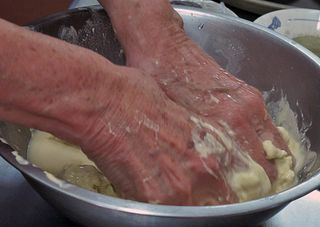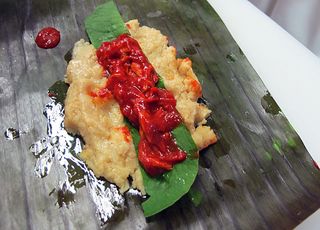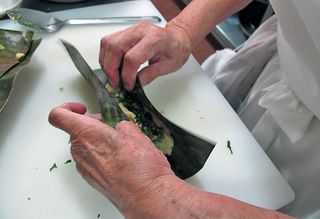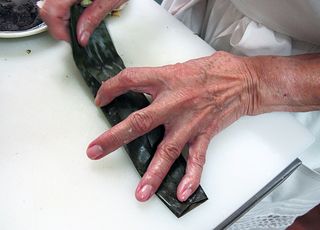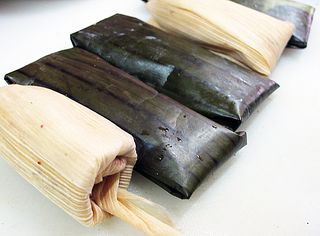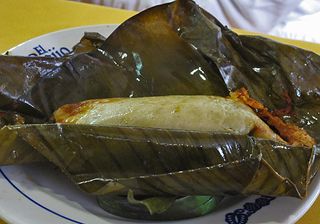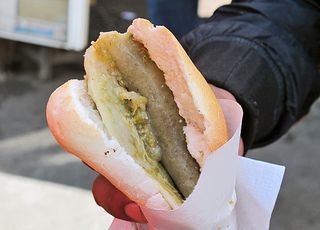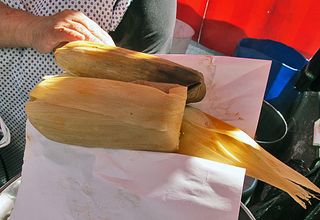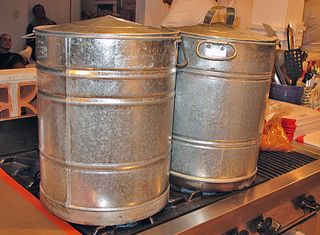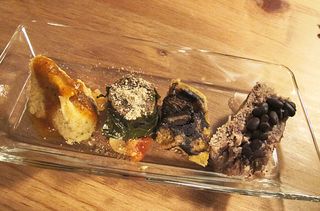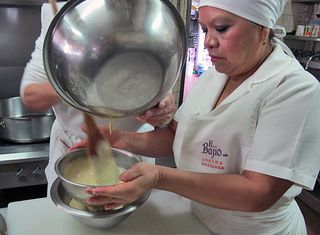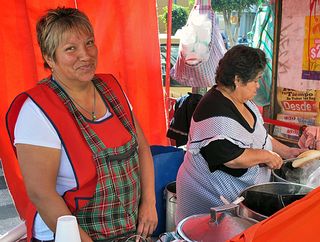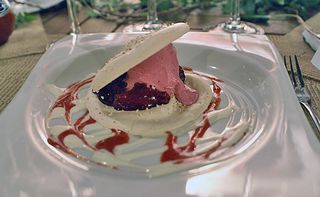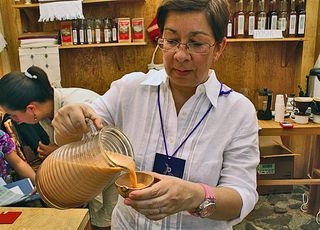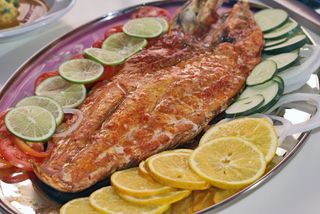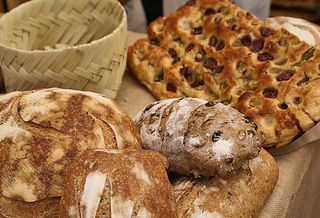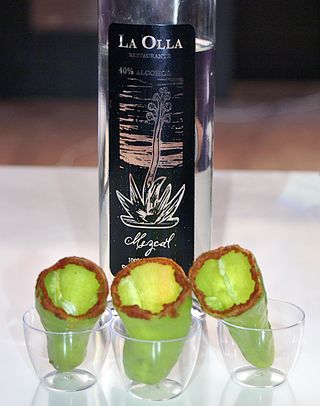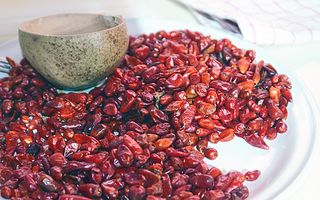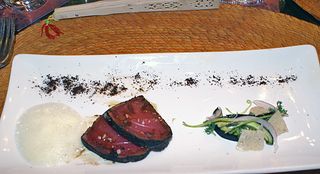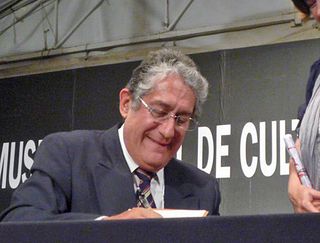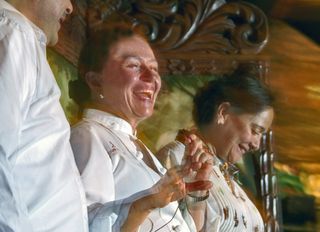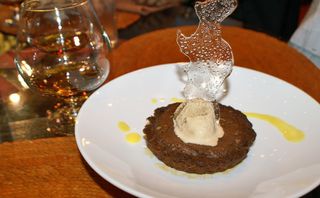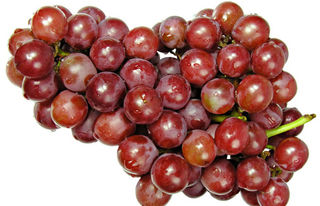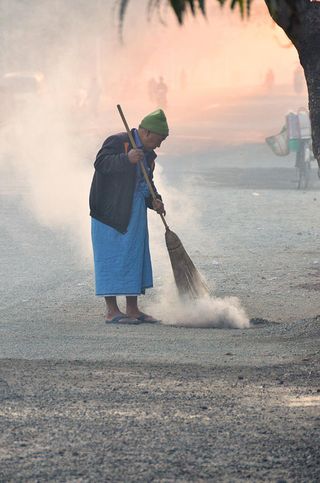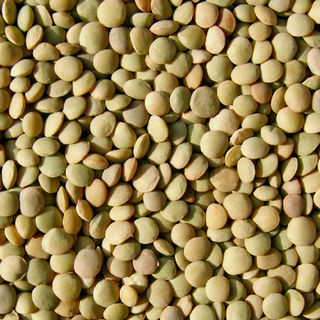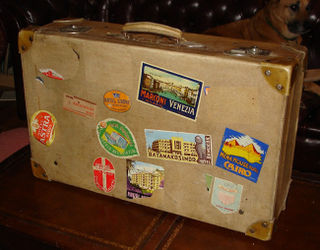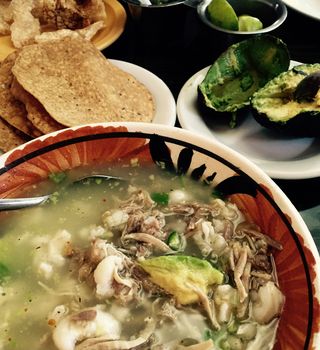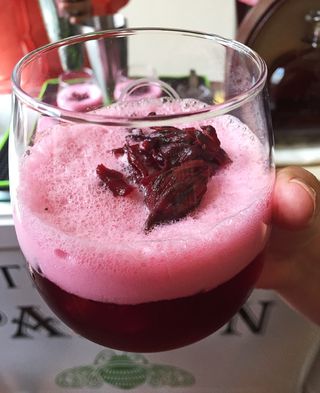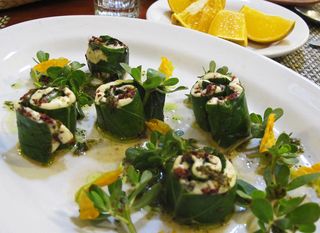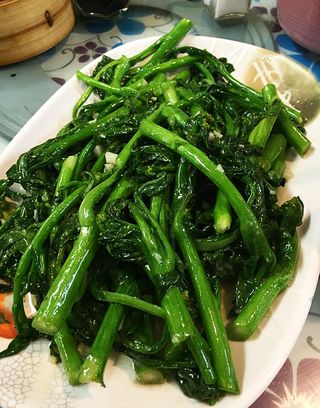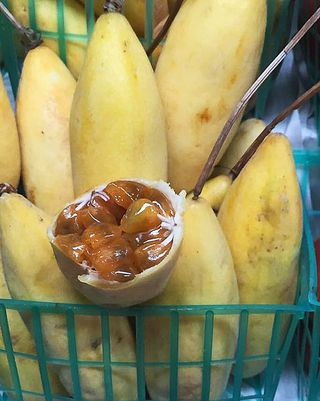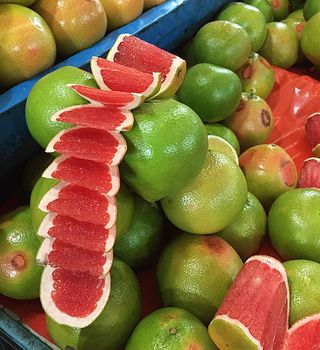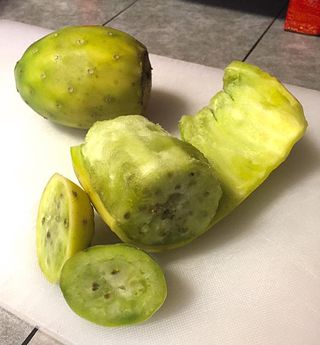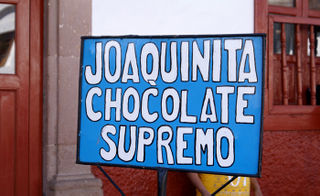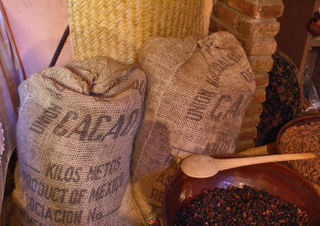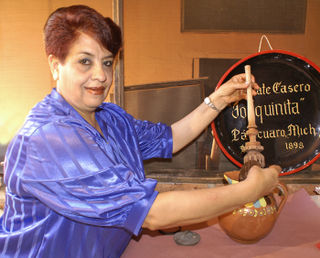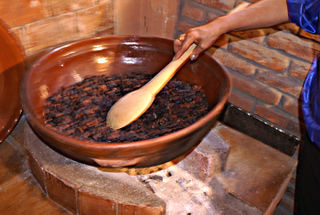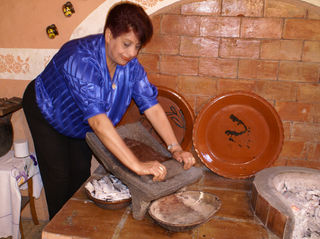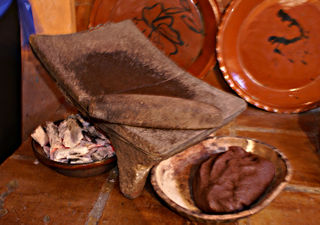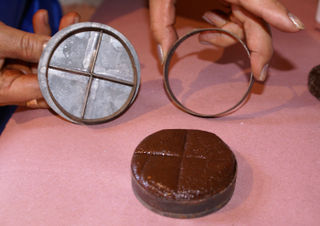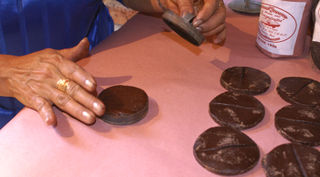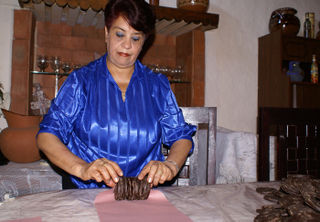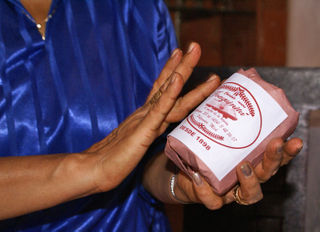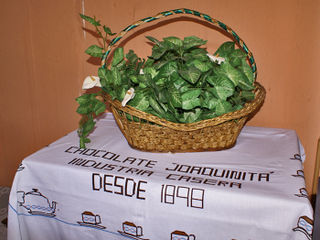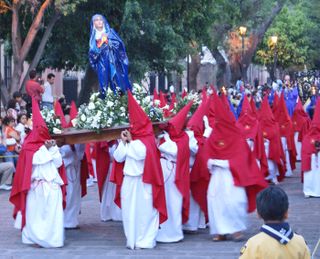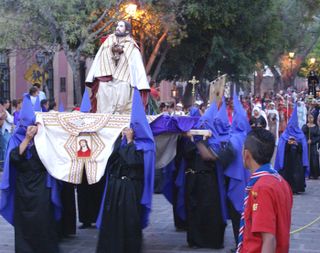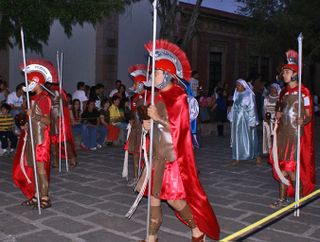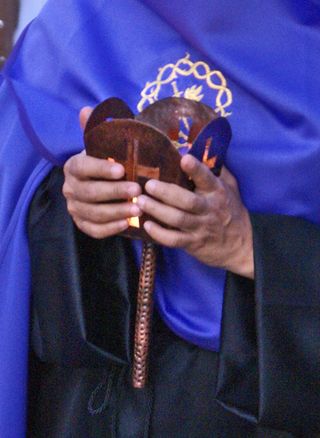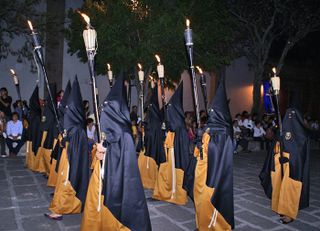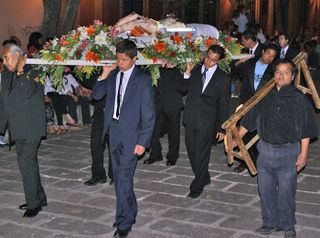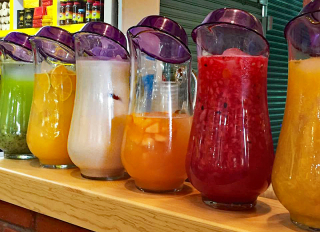
If you've shopped at any of Mexico's thousands of tianguis (street markets), municipal markets, or fairs, you may have wondered what certain vendors were ladling out of their frosty glass jugs. Those are aguas frescas, made in every fresh fruit flavor you can imagine. In general, these fruit waters are made from purified water and are safe to drink. The aguas frescas in the photo are at Aguas de Casilda, Mercado Benito Juárez, in the city of Oaxaca. The large, beautiful stand is an icon in Oaxaca.
In addition to aguas frescas, there are numerous fresh or fermented drinks along Mexico's way. At various hole-in-the-wall supper restaurants, pineapple tepache is the order of the day, served fizzing with a pinch of bicarbonate of soda. And on the outskirts of one small town as you drive toward Guadalajara, a sign hangs from a guamúchil tree. It reads "Aquí Se Vende Pajarete" (Pajarete Sold Here) and advertises yet another unusual beverage.
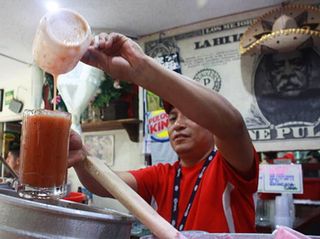
Along many highways and byways, you'll regularly see someone selling aguamiel and pulque, the ancient drink of the Aztecs, from large jars positioned on a tiny table. By the same token, pulque, both unflavored and curado (flavored with fruit, vegetables, or nuts) is a favorite in bars called pulquerías.
Tuba

Tuba vendor, Puerto Vallarta, Jalisco.
If you've wandered along the magical beaches bordering Mexico's western coastlines, you may have noticed a man with a yoke-like pole across his shoulders, a red painted gourd suspended from the pole by a rope. His cry is "Tuba! Tubaaaaaaaaaaa!" and his hands are full of plastic cups.
In Mexico, tuba is primarily a coastal drink. Several years ago I was surprised to see a tuba vendor at a tianguis in Guadalajara. Later I started seeing the same man selling tuba in Tlaquepaque, and at the Thursday and Sunday artisans' tianguis in Tonalá. If you happen to be in the area, look for him—he's easy to spot, with his bright-red gourd of tuba suspended from a pole across his shoulders.

A glassful of tuba, served with freshly chopped apple, salted peanuts, and ice.
Coconut palm sap is fermented to make the clear, white, sweet wine called tuba. To collect the sap, workers climb the palm tree in the morning and evening and bruise the coconut flower stalk until it starts to ooze its liquid. The stalk is tied with bamboo strips into a special bamboo container to catch the sap. Crushed tanbark from the mangrove tree is dropped into the container to give the sap a reddish color and to hasten its fermentation. As many as three flowers from one coconut tree can be made to yield sap. Each flower produces tuba for two months, after which it dries out and is cut from the tree.
The liquid actually begins to ferment while still in the bamboo container on the tree, but the alcohol content increases considerably with longer fermentation. Tuba quenches the thirst, is good for indigestion, and makes conversation flow easily.
Tejuino
Since long-ago times, cooling tejuino has refreshed Mexico. It's made from the same corn masa (dough) that's used for tortillas and tamales. The prepared masa is mixed with water and piloncillo (cone-shaped Mexican brown sugar) and boiled until the liquid is quite thick. It's then allowed to ferment slightly—but just slightly. I've never known anyone to get so much as a buzz from sipping a cupful of cold tejuino.
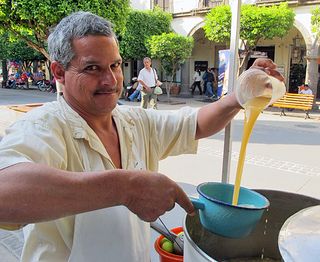
Tejuino vendor, Tlaquepaque, Jalisco.
Once the tejuino is thickened and fermented, it's mixed as needed with freshly squeezed jugo de limón (key lime juice), a pinch of salt, water, ice, and a big scoop of lemon sherbet. Just about everywhere in Mexico, it's sold in plastic glasses—small, medium, and large—or in a plastic bag with the top knotted around a drinking straw.
Some people say that tejuino is an acquired taste. I acquired the taste for it the very first time I tried it and often crave it on hot afternoons. There is nothing more refreshing. Fortunately, there was a tejuino vendor just a block from my house in Guadalajara, so I could buy a glassful when the spirit moved me. Cup after cup of freshly prepared tejuino is ladled out to customers every day. Although tejuino is only a slightly sweet drink, the masa base makes tejuino very filling. A small glass is usually very satisfying.
Tejate

Tejate, a cold and foamy nixtamal-ized corn and chocolate drink, is particular to Oaxaca, especially found in the city's markets and in the small towns all around the area. Tejate is very refreshing on a hot day at the market–in this case, at the weekly market in Zaachila, Oaxaca. Compare the size of the jícara (the red enameled bowl afloat in the tejate) to the size of this very large clay vessel.
Tepache
I've found tepache in several cenadurías (restaurants open for supper only, usually from 7:30 PM until midnight) in Mexico, as well as at street stands and, occasionally, market stands. Tepache is simple to make and the ingredients are readily available whether you live North or South of the Border. You might like to try this at home.
Tepache (teh-PAH-cheh)
1 whole pineapple (about 3 pounds)
3 quarts water
1 pound piloncillo or brown sugar
1 cinnamon stick, approximately 3" long
3 clovesWash the skin of the pineapple well. Cut off the stem end and discard. Leave the skin on the pineapple and cut the entire fruit into large pieces.
Place the pieces of pineapple in a large container and add two quarts of water, the piloncillo or brown sugar, the cinnamon, and the cloves. Cover and allow to rest in a warm place for approximately 48 hours. The longer you allow the liquid and fruit to rest, the more it will ferment. If you let it sit for longer than 48 hours, taste it periodically to make sure it is not overly fermented, as it will go bad.
Strain the liquid—the tepache—and add the last quart of water.
If you prefer, do not add the last quart of water. Instead, add one cup of beer and allow to rest for another 12 hours.
Strain again and, if you have used the beer, add three cups of water.
Serve cold with ice cubes.
At any cenaduría, you can ask for your tepache with a pinch of bicarbonate of soda. You can also add it at home, just before you're ready to drink a glassful. The addition makes the tepache fizz and bubble, and it's said to be extremely good for the digestion. An elderly neighbor of mine swears by it as a heartburn remedy.
Pajarete
In the Mexican countryside, tequila drinking starts as soon as the sun comes up. If you drive Mexican highways early any morning—early, please, when the air is still chilly and cool gray bruma (light fog) clings to the flanks of the mountains of the Central Highlands—look for a small hand painted sign. "Aquí Se Vende Pajarete" (pah-hah-REH-teh) is all it says. The sign may hang from a tree, it may be tacked to a fencepost, and you won't see any indication of a cart or stand.
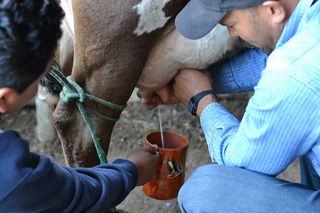
Aqui se vende pajarete: Pajarete sold here!
Away from the road, behind the trees, past the bushes, just over there by those old wrecked cars, a dairy farmer milks his cows. As he milks the patient cows and they snuffle their hot breath into the misty morning, groups of men (sombrero-wearing men who are real men) gather around the cow lot, each man with his large clay mug. Into each mug go a stiff shot of either charanda (a sugar cane alcohol), mezcal, or tequila, a bit of sugar and some cinnamon-laden Mexican chocolate grated from a round tablet. The mug is then filled with warm milk, freshly squeezed directly into the mug–straight from the cow. More a body-temperature drink than a cold drink, that's pajarete: breakfast of champions.
I don't expect you to whip up most of these six popular drinks in your home kitchen, but I thought you'd love knowing about some of Mexico's really unusual cold drinks.
There are many more interesting and unusual drinks in Mexico, everything from A (acachú, a drink that sounds like a sneeze, made near Puebla from the wild cherry) to Z (zotol, made in Chihuahua from the sap of wild yucca). Wherever you are in Mexico, you'll find something fascinating to quench your thirst, make you feel more at home in the culture, and give you a story to tell.
A toast to each of you: Salud, dinero, y amor, y tiempo para gozarlos. Health, money, and love, and time to enjoy them.
Looking for a tailored-to-your-interests specialized tour in Mexico? Click here: Tours.
